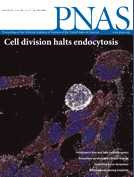JAMA:短信提醒可提高低收入儿童和青少年的流感疫苗接种率
2012-05-19 EurekAlert EurekAlert
据4月25日刊《美国医学会杂志》上的一项研究披露,与常规的医疗方式相比,一种通过给家长发送与教育有关的讯息短信的干预方法可在一个按照惯例难以联系到的、低收入的、城市少数族裔的儿童及青少年人群中增加流感疫苗接种的覆盖率,尽管总体的覆盖率仍然低下。 纽约市哥伦比亚大学的Melissa S. Stockwell, M.D., M.P.H.及其同事评估了以低收入、城市中的家长为目标的,宣传在儿童和青少年

据4月25日刊《美国医学会杂志》上的一项研究披露,与常规的医疗方式相比,一种通过给家长发送与教育有关的讯息短信的干预方法可在一个按照惯例难以联系到的、低收入的、城市少数族裔的儿童及青少年人群中增加流感疫苗接种的覆盖率,尽管总体的覆盖率仍然低下。
纽约市哥伦比亚大学的Melissa S. Stockwell, M.D., M.P.H.及其同事评估了以低收入、城市中的家长为目标的,宣传在儿童和青少年中接种流感疫苗的短信的效果。该随机对照的试验包括了9,213名年龄在6个月至18岁的儿童和青少年,他们于2010-2011流感季节在4家美国的以社区为基础的诊所中接受了治疗。在这9,213名儿童和青少年中,有7,574人在该干预开始之日前没有接受过流感的疫苗接种,他们被纳入首要的分析之中。被分到干预组的孩子的家长每周会收到多至5个免疫注册相关的短信,这些短信提供了教育性的资讯及有关周六诊所的说明。
在这一研究中的儿童和青少年主要为少数族裔,他们中88%的人具有公共保险,有58%的人来自说西班牙语的家庭。截至2011年3月31日,与常规治疗组(39.9%)相比,干预组中的儿童和青少年有着较高的接种了流感疫苗的比例(43.6%)。到这一日期为止,在所有接种了疫苗的儿童和青少年中,在干预组中,有93.9%的人是在周六诊所之外接种疫苗的,而在常规治疗组中,这一比例为97.2%。
在基于组群的秋季审查日时,接种了流感疫苗的比例在干预组中为27.1% vs.常规治疗组中为22.8%。
文章的作者写道:“用短信来增加疫苗接种的覆盖率有着众多的优点。它可以联系到庞大的人群,而像流感疫苗这样的建议为大多数人进行接种的疫苗,接种率只要有小幅的增加都可产生数目庞大的受到保护的个人。它也可能很划算。这一系统一旦设立,唯一的可变成本就是发送短信,而即便使用的是商用平台,其每则短信的成本也常常只需几分钱。因此,取决于人口的规模,即使预先摊销并监控成本,基于每一个人的发送短信的成本还是便宜的。”(生物谷:Bioon.com)

doi:10.1038/nbt.2149
PMC:
PMID:
Effect of a Text Messaging Intervention on Influenza Vaccination in an Urban, Low-Income Pediatric and Adolescent Population
Melissa S. Stockwell, MD, MPH; Elyse Olshen Kharbanda, MD, MPH; Raquel Andres Martinez, PhD; Celibell Y. Vargas, MD; David K. Vawdrey, PhD; Stewin Camargo, BS
Context Influenza infection results in substantial costs, morbidity, and mortality. Vaccination against influenza is particularly important in children and adolescents who are a significant source of transmission to other high-risk populations, yet pediatric and adolescent vaccine coverage remains low. Traditional vaccine reminders have had a limited effect on low-income populations; however, text messaging is a novel, scalable approach to promote influenza vaccination.
Objective To evaluate targeted text message reminders for low-income, urban parents to promote receipt of influenza vaccination among children and adolescents.
Design, Setting, and Participants Randomized controlled trial of 9213 children and adolescents aged 6 months to 18 years receiving care at 4 community-based clinics in the United States during the 2010-2011 influenza season. Of the 9213 children and adolescents, 7574 had not received influenza vaccine prior to the intervention start date and were included in the primary analysis.
Intervention Parents of children assigned to the intervention received up to 5 weekly immunization registry–linked text messages providing educational information and instructions regarding Saturday clinics. Both the intervention and usual care groups received the usual care, an automated telephone reminder, and access to informational flyers posted at the study sites.
Main Outcome Measures Receipt of an influenza vaccine dose recorded in the immunization registry via an electronic health record by March 31, 2011. Receipt was secondarily assessed at an earlier fall review date prior to typical widespread influenza activity.
Results Study children and adolescents were primarily minority, 88% were publicly insured, and 58% were from Spanish-speaking families. As of March 31, 2011, a higher proportion of children and adolescents in the intervention group (43.6%; n = 1653) compared with the usual care group (39.9%; n = 1509) had received influenza vaccine (difference, 3.7% [95% CI, 1.5%-5.9%]; relative rate ratio [RRR], 1.09 [95% CI, 1.04-1.15]; P = .001). At the fall review date, 27.1% (n = 1026) of the intervention group compared with 22.8% (n = 864) of the usual care group had received influenza vaccine (difference, 4.3% [95% CI, 2.3%-6.3%]; RRR, 1.19 [95% CI, 1.10-1.28]; P < .001).
Conclusions Among children and adolescents in a low-income, urban population, a text messaging intervention compared with usual care was associated with an increased rate of influenza vaccination. However, the overall influenza vaccination rate remained low.
Trial Registration clinicaltrials.gov Identifier: NCT01146912
本网站所有内容来源注明为“梅斯医学”或“MedSci原创”的文字、图片和音视频资料,版权均属于梅斯医学所有。非经授权,任何媒体、网站或个人不得转载,授权转载时须注明来源为“梅斯医学”。其它来源的文章系转载文章,或“梅斯号”自媒体发布的文章,仅系出于传递更多信息之目的,本站仅负责审核内容合规,其内容不代表本站立场,本站不负责内容的准确性和版权。如果存在侵权、或不希望被转载的媒体或个人可与我们联系,我们将立即进行删除处理。
在此留言














#接种率#
67
#儿童和青少年#
84
#低收入#
77
#流感疫苗接种#
88
#疫苗接种#
75